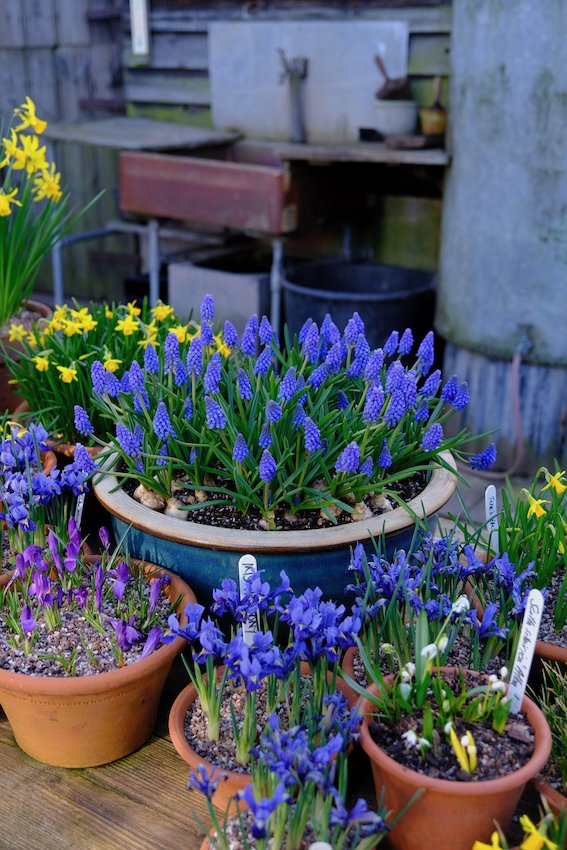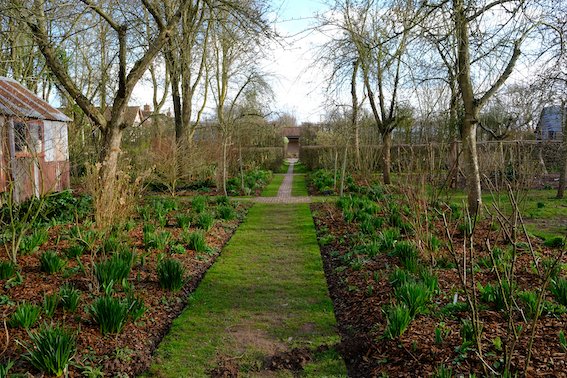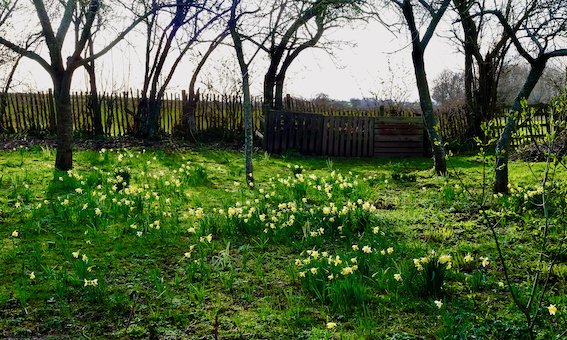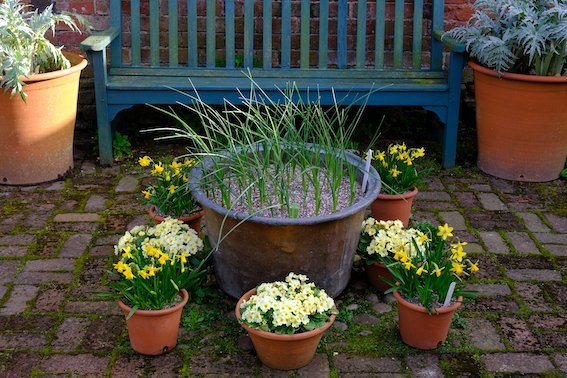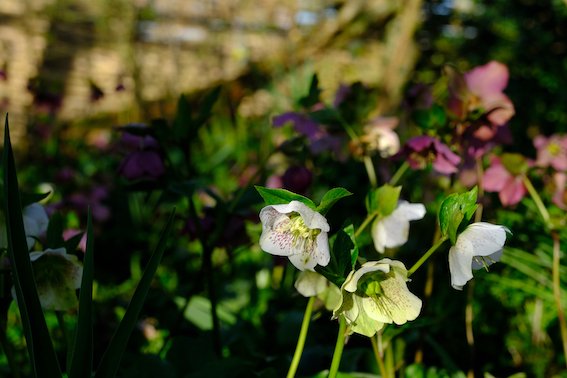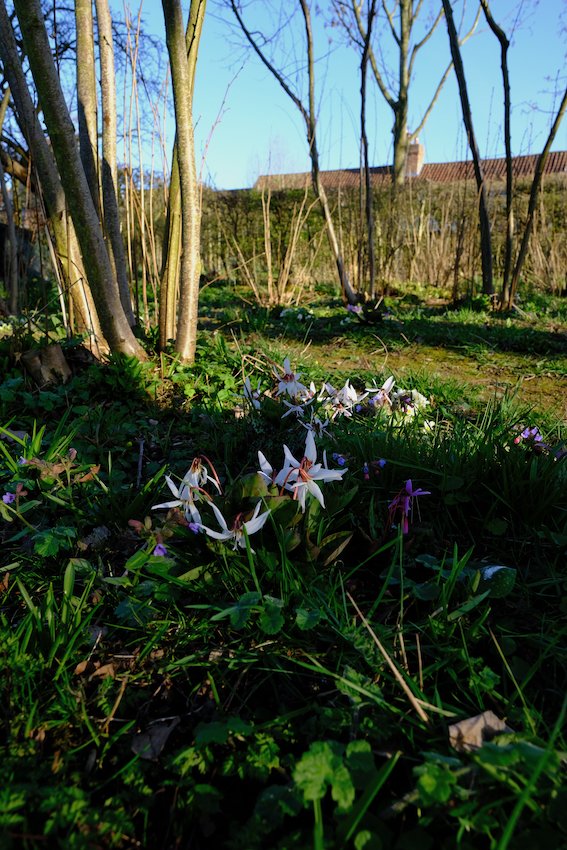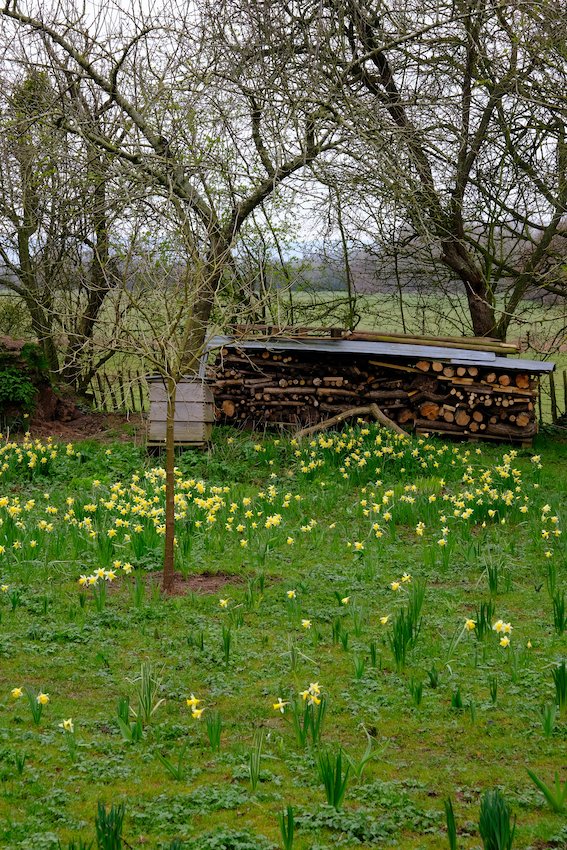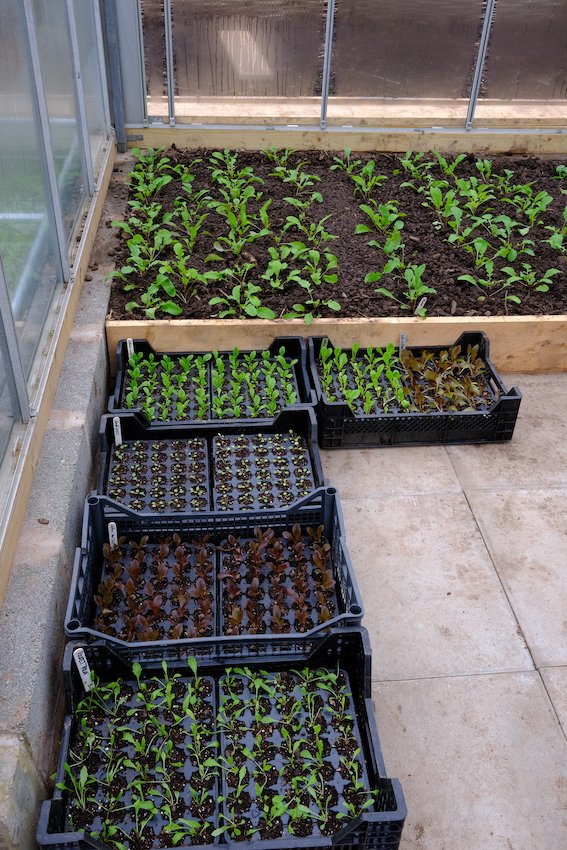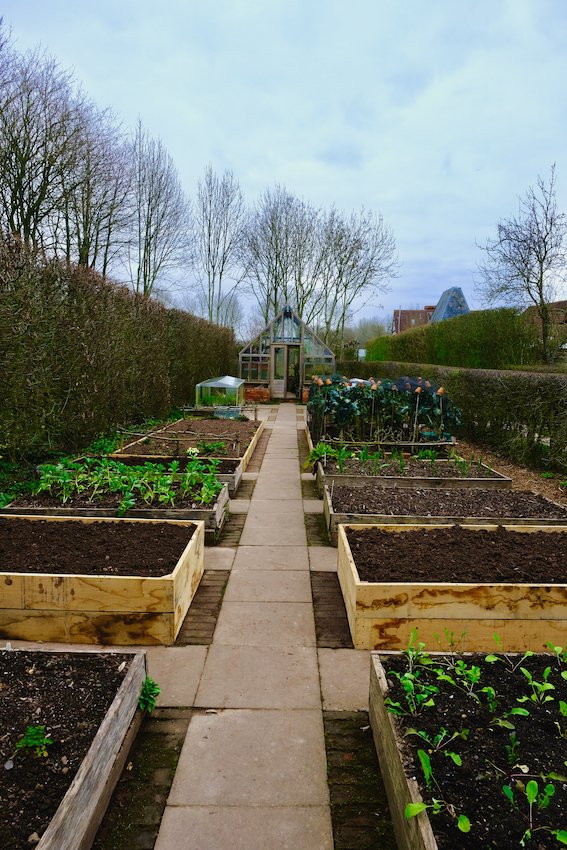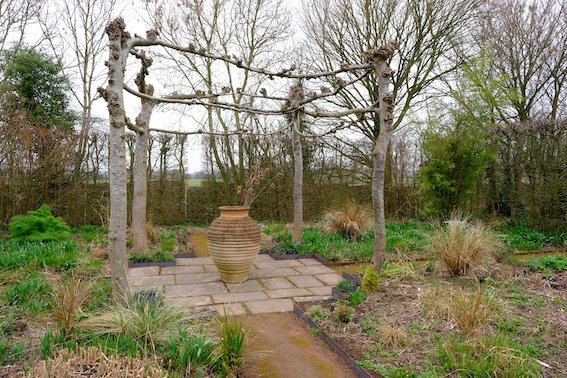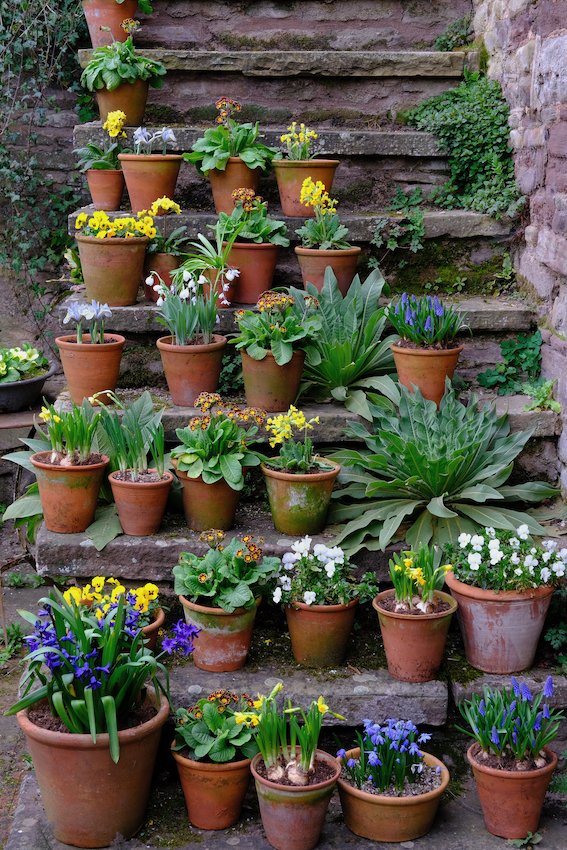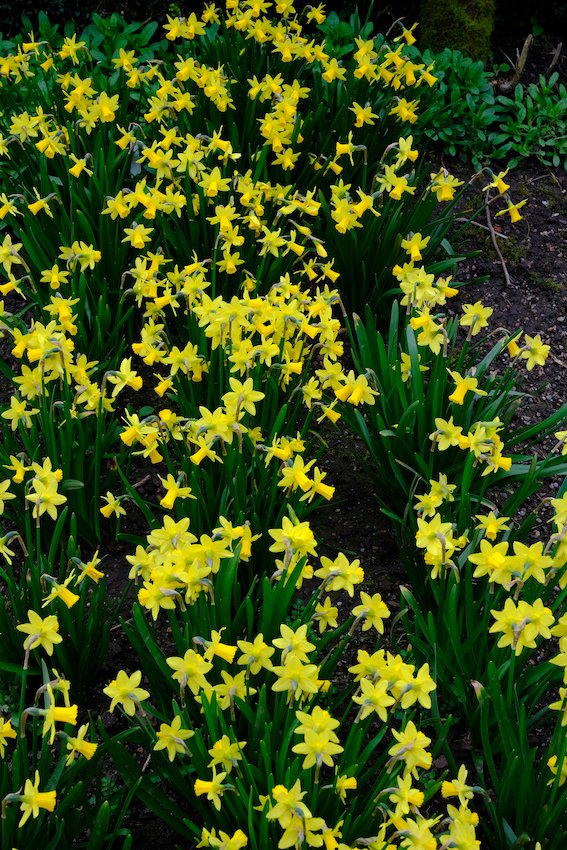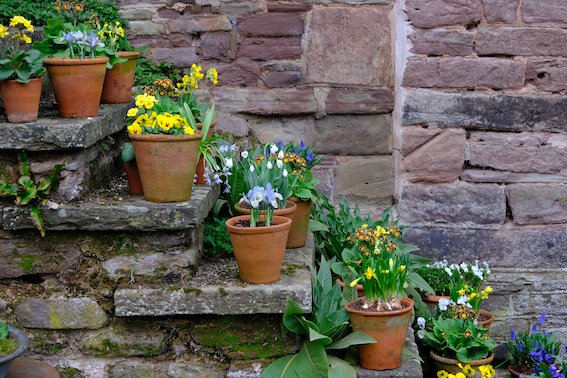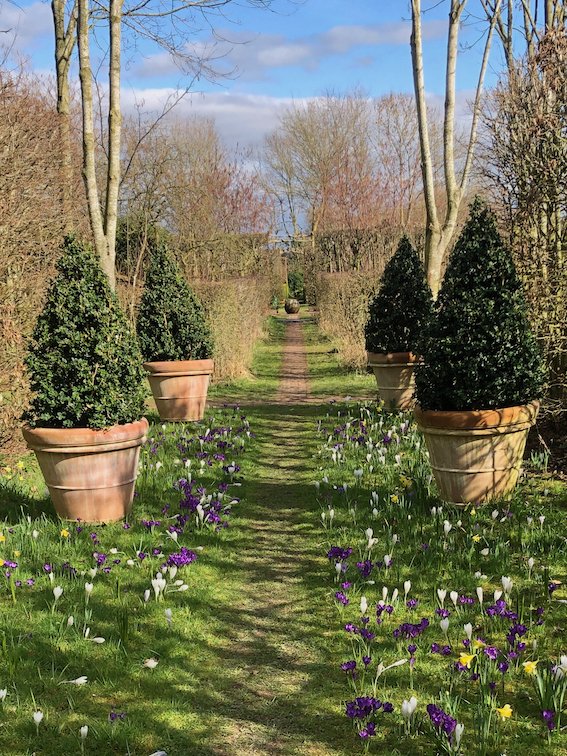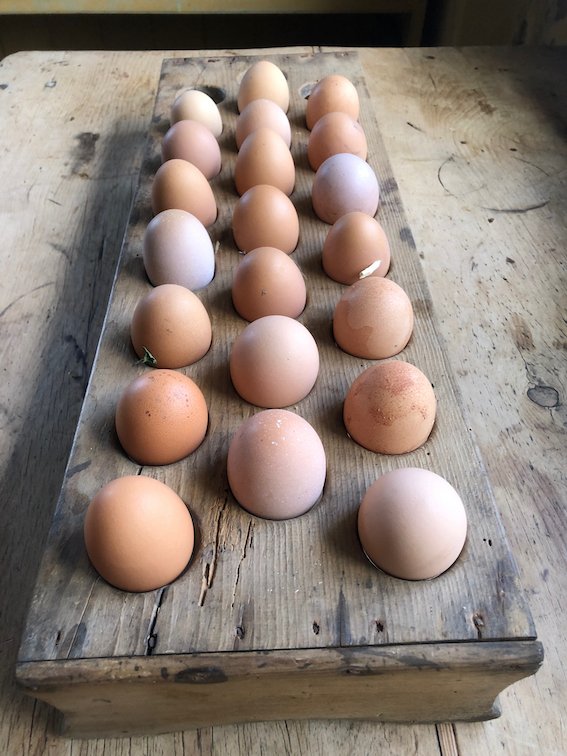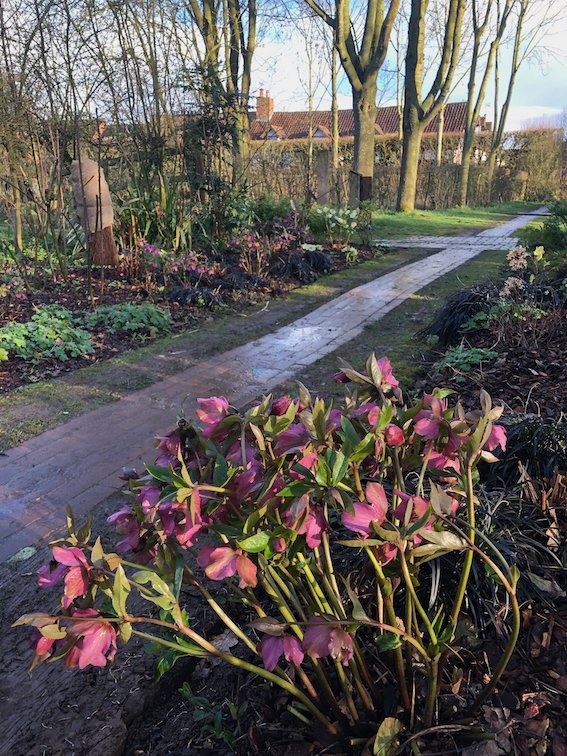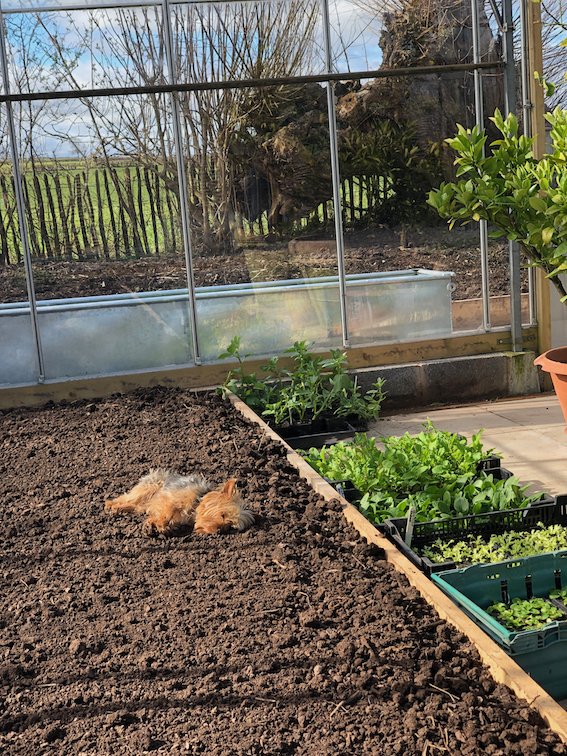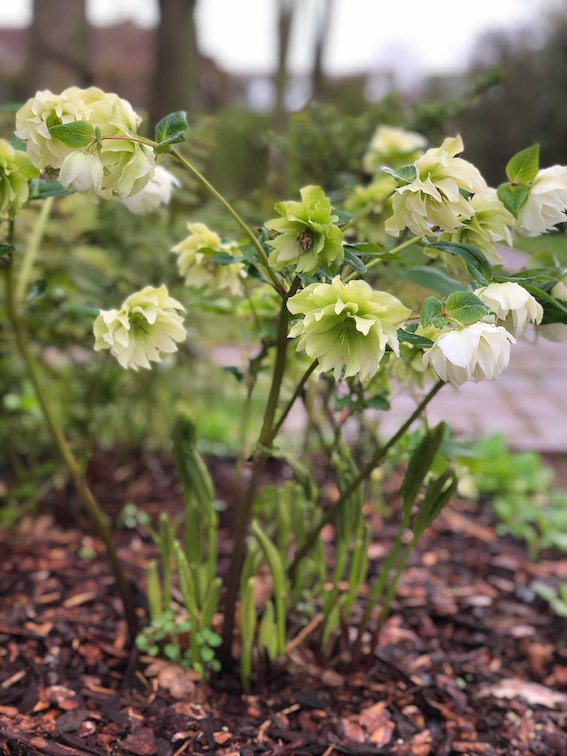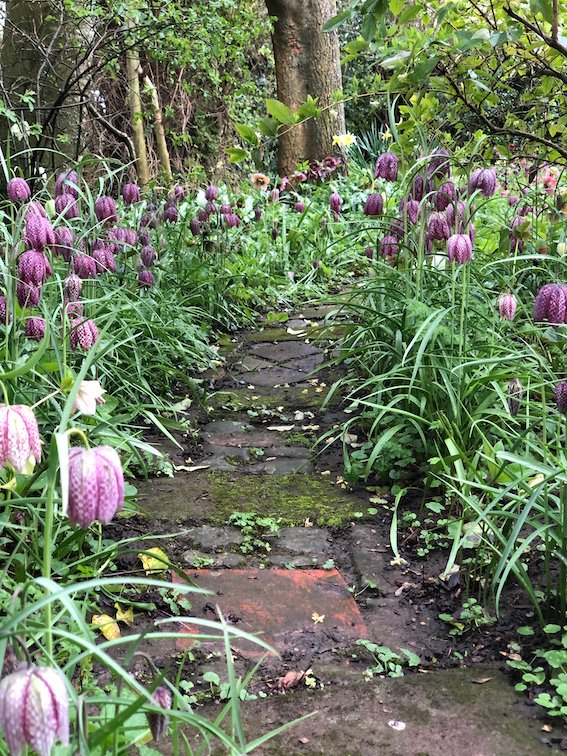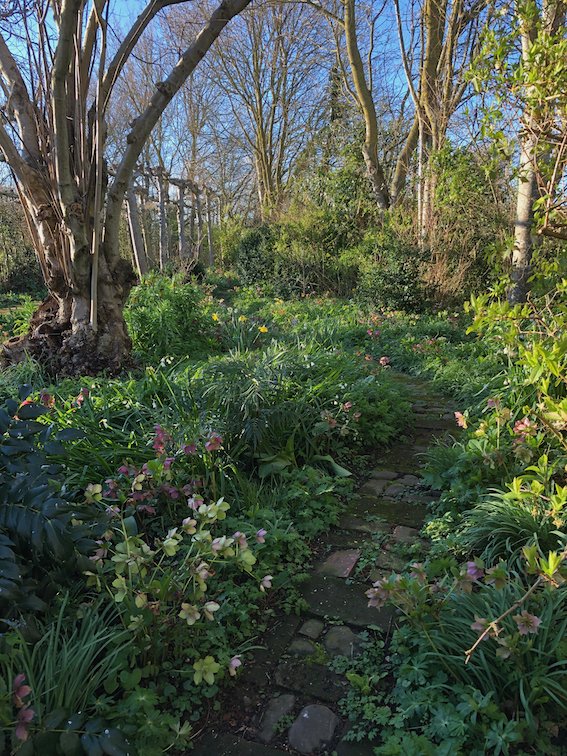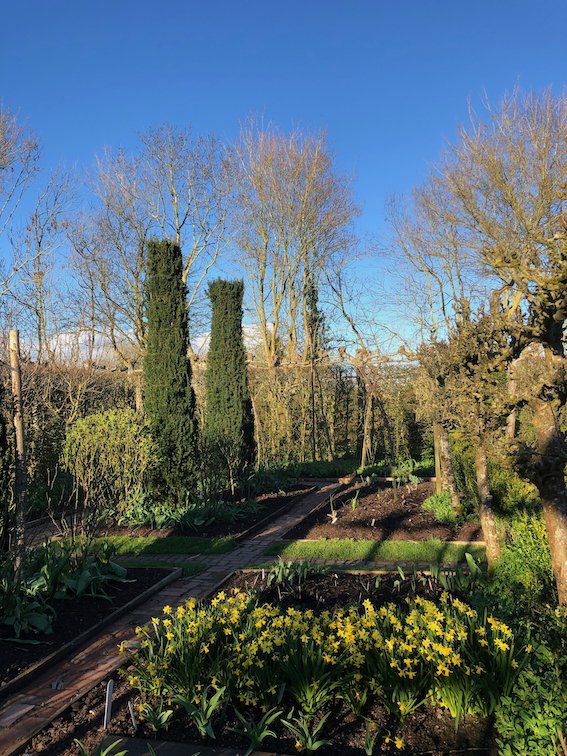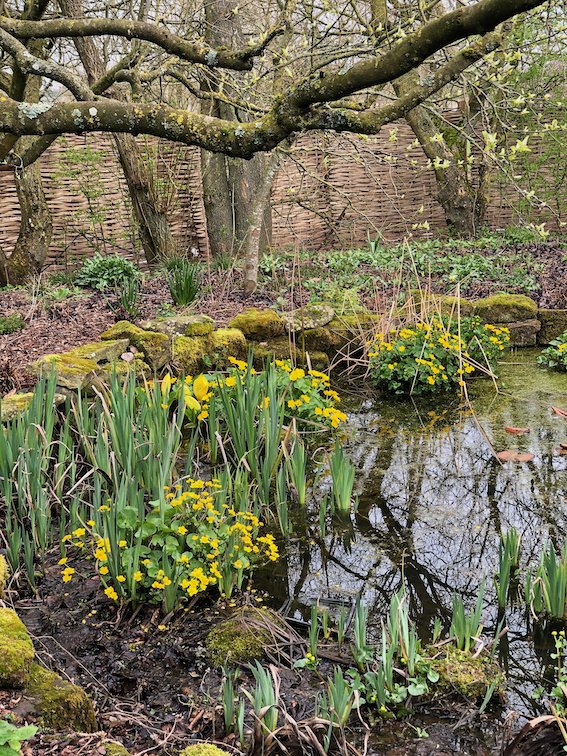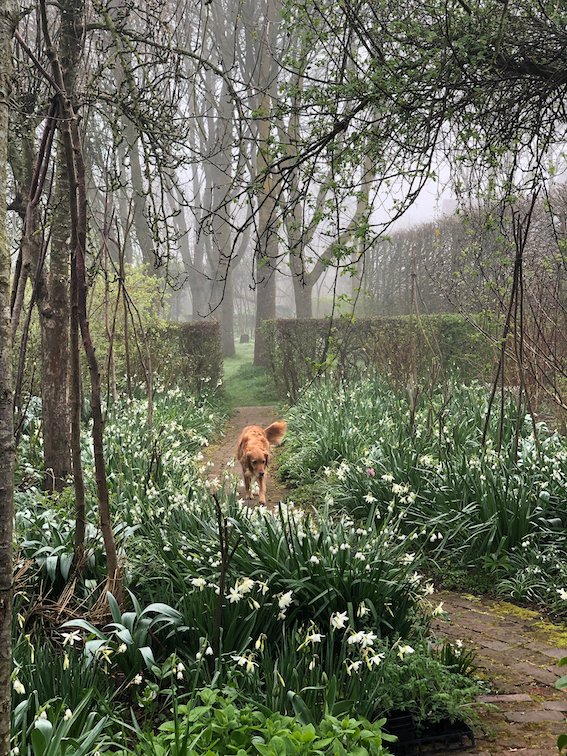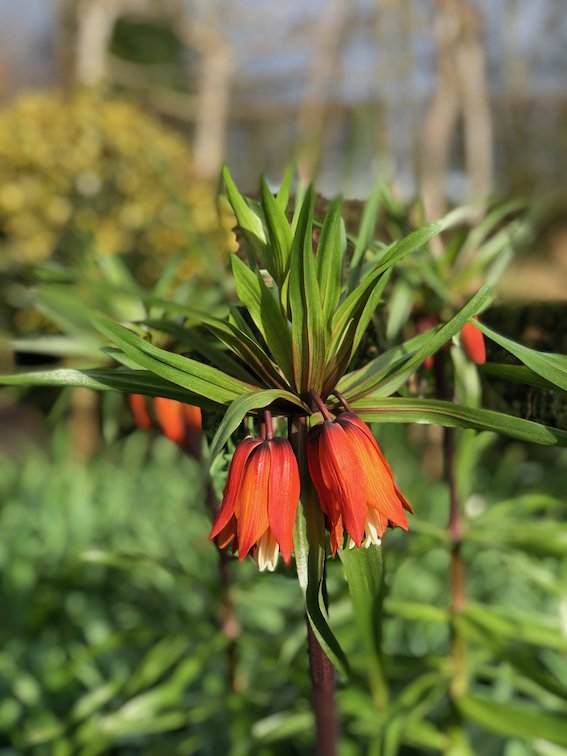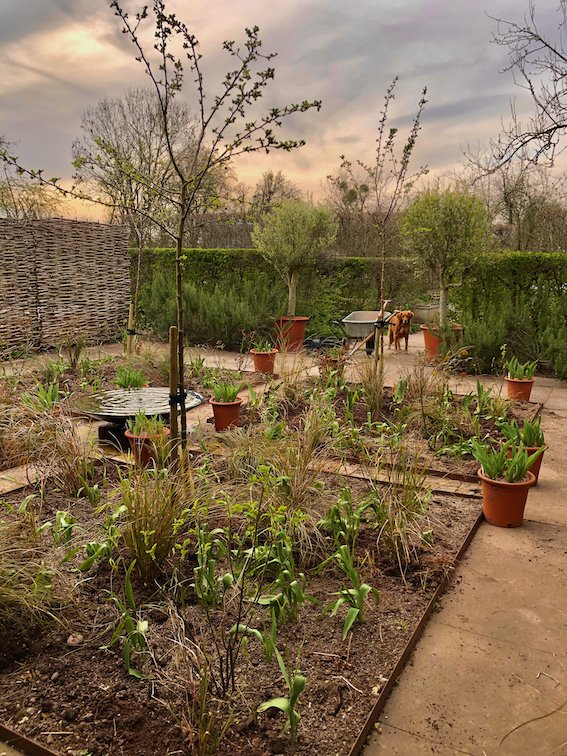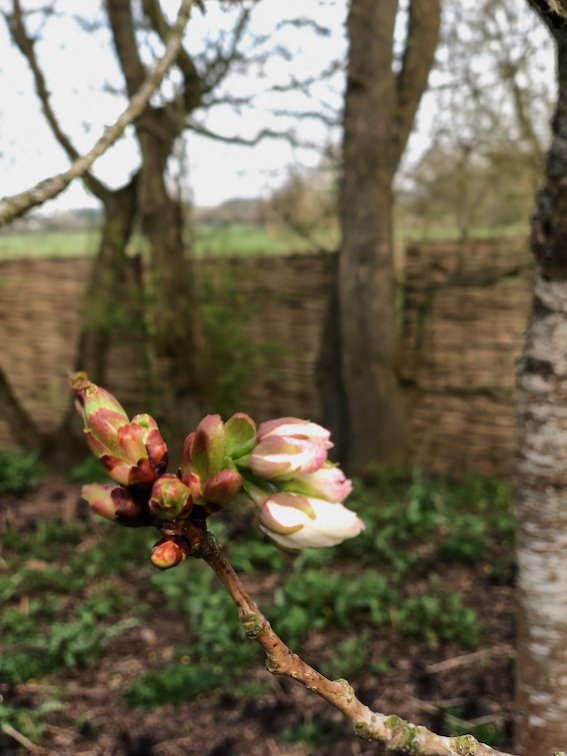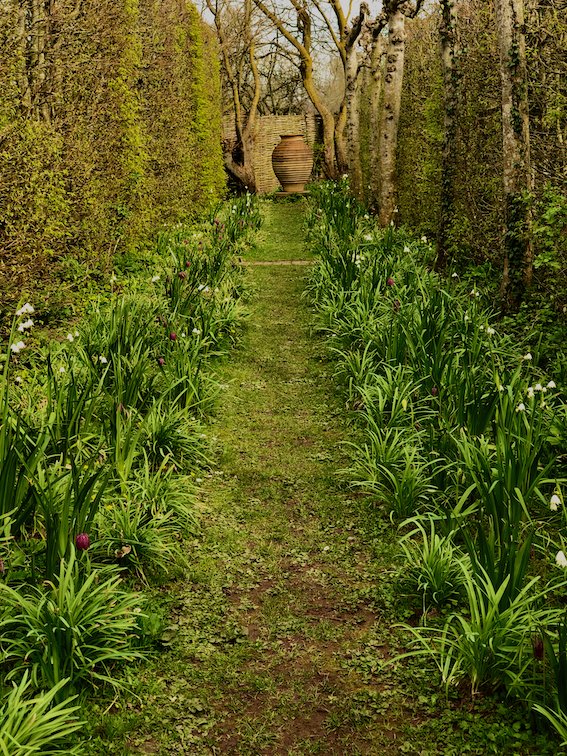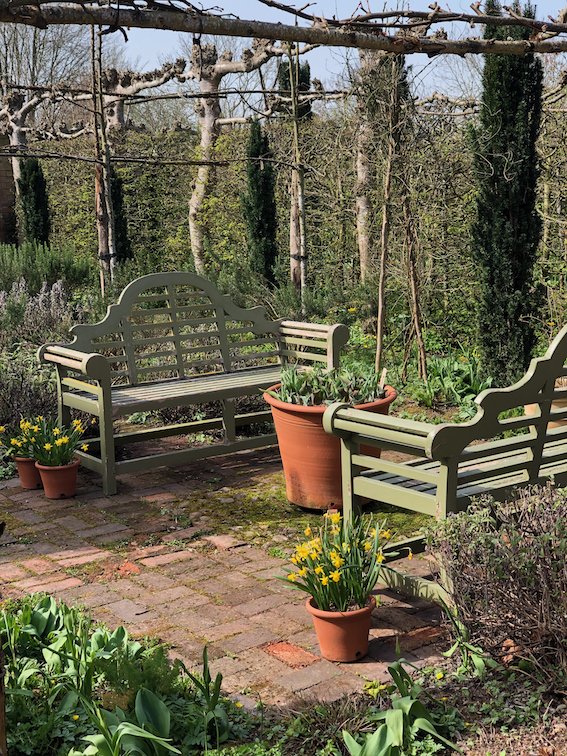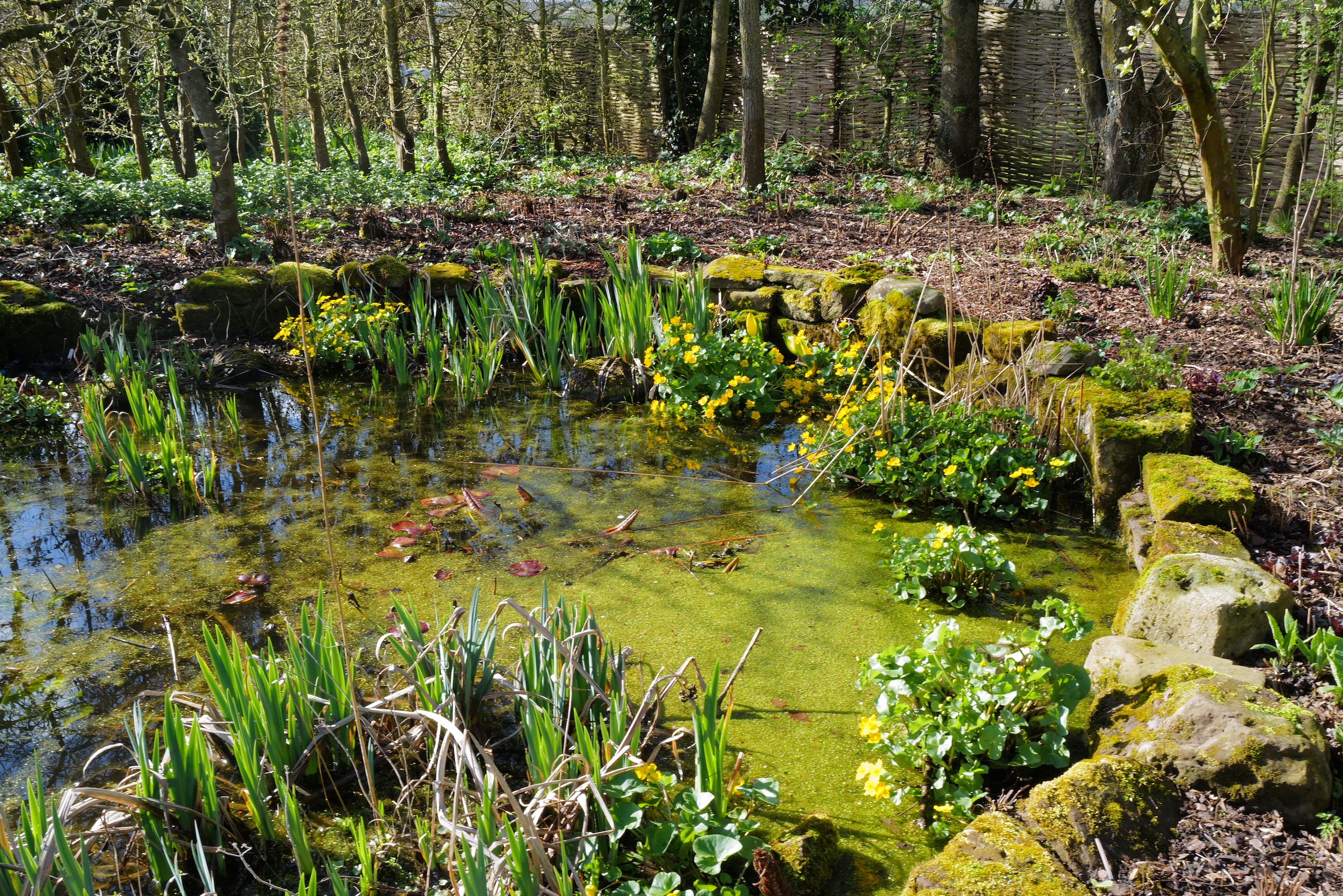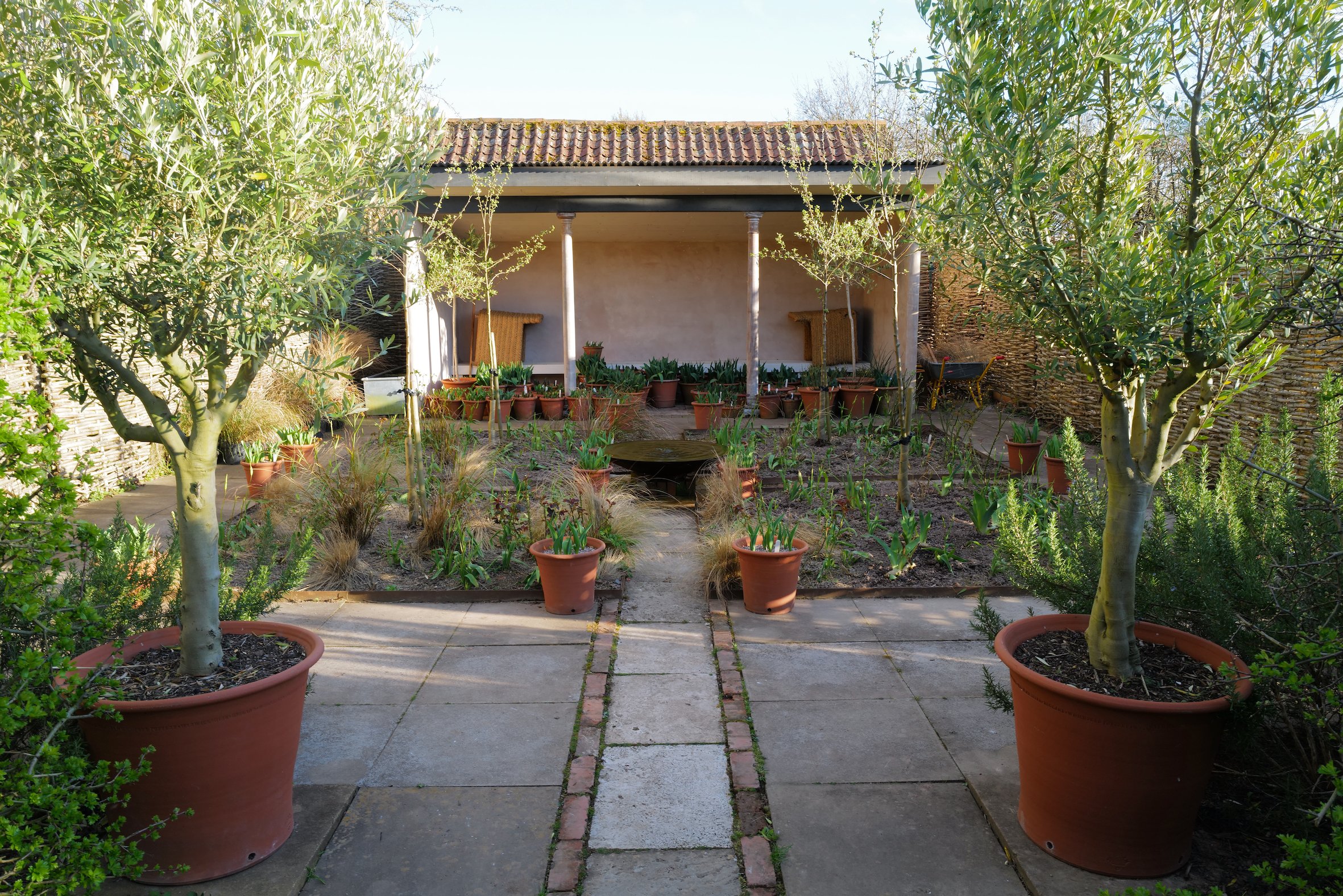March 2022
Everything changes, but nothing changes so much as the weather in March, here in Britain - and especially so here in this particular corner of Western England, close by the Welsh border. March is likely to have bright sun, gales, rain, hail, snow, ice and often all on the same day. It is as though the weather is trying its hand, seeing what it can do before settling into Spring.
But, whatever the weather, Spring is here in the garden. As I write this on the last day of February, I can see snow on the distant hills and the wind blows icy keen, but the garden is filled with snowdrops, crocus, daffodils, iris, scillas, hyacinths, muscari and the first sprinkling of Blackthorn blossom in the hedgerows.
The greatest gift that March offers the gardener is light. The days begin to edge into the evenings, and with the Spring equinox, on March 22nd, day at last outweighs night. Light is the most precious thing for any gardener and I realise that we underestimate how subtle its influence is, both for good and bad. Just half an hour's extra light a day can make a huge difference. By the same token climate change seems to mean that here in the UK our summers are cloudier, therefore have less light despite being warmer. This is starting to have marked effect on how plants are behaving throughout the year.
It is a busy month of course - seeds to be sown and seedlings pricked out, deciduous pruning and planting to be completed, borders to be dug or mulched, herbaceous plants to be lifted and divided - there is a real sense of business that enters the garden. The more you can do in March the better the garden will be later in the year.
However, I always find time to stop and listen to March birdsong, particularly at dusk, which has an energy and urgency that is matched at no other time of year.
March Jobs
Any herbaceous plant can be divided this month. Dig the whole plant up and discard the centre section to the compost heap, replanting the more vigorous outside parts of the plants in groups which will grow together to make one large plant. It is worth doing this to all herbaceous perennials every three to five years.
If your soil is ready then March is a good time to plant and move things around. But ‘ready’ means, above all, warm enough. The only way to know this is by touch. Pick up a handful of earth. If it feels cold and clammy then seeds will not germinate and roots will not grow. If it feels warm, holds together when squeezed and yet can easily be crumbled then it is ideal.
Lawns
The grass will need mowing March but do not cut it too short. Just give it a light trim for the rest of this month. This will encourage good root growth and as a result the grass will be a lot healthier and better able to resist summer drought.
To get a ‘good’ lawn you have to think positively. Put your efforts into healthy grass rather than fighting perceived ‘problems’ like daisies, moss, ants, worm-casts, moles, plantains, dandelions and fairy rings. Nine times out of ten if the grass is healthy then everything else will look after itself.
The best grass likes very well drained soil. Moss, for example, is always a symptom of poor drainage, made worse by shade. Unfortunately even the best prepared soil becomes compacted by matted roots, rain and, especially, normal family use. The answer is to work on it at least once a year by sticking a fork in the ground and wiggling it about and repeating the process every 6 inches or so.
Then mix up equal portions of sieved topsoil, sharp sand and sieved leaf mould or compost. If you do not have these things to hand then just sharp or silver sand will do the job. Spread it across the area you have pricked and brush it in with a stiff broom, filling the holes with the mixture. This will help drainage and feed the grass.
It is also worth giving the lawn a good scratch with a wire rake. This will get at all the overwintering thatch and moss, and let light and water get to the soil and to the roots of the grass. Put the debris on the compost and then mow.
Bulbs
Do NOT cut back, tie or tidy the leaves of any bulbs but let them die back naturally as next year’s flower is being created by the photosynthesis of the foliage. Leave them until the last trace of green has gone m- which will be at least June - and then tidy them or cut back.
Pruning
The first half of March is the best time to prune any shrubs and climbers that will flower on new growth and in particular late flowering clematis, roses and buddleia and caryopteris. I like to do this when I start to see new shoots appearing but resist the temptation to do so if there is a mild February as the subsequent regrowth can be nipped back by a late frost.
Shrubs such as Cornus, Willow and Sambucus can also be cut back hard to encourage fresh shoots whose bark will glow with extra bright colour next winter.
I know that pruning can be the cause of some anxiety but there is only one rule to follow which is always cut back to something, be it a side shoot or leaf bud. Other than that do not worry unduly about outward facing buds or any such finessing. Cut with abandon or, don’t cut at all. Either way the plant will almost certainly be fine.
The reason for pruning is to encourage vigorous new growth that will in turn produce lots of flowers and, in climbers such as the viticella group clematis, to stop the flowers being produced ever higher and higher up the plant with correspondingly bare lower portion.
Ornamental Grasses
Deciduous grasses like miscanthus, calamagrostis and deschampsia should all be cut back hard to the ground before the new green shoots start to grow too long. Evergreen grasses like the Stipa and cortaderia families should not be cut back. However comb through each plant with a rake or your hands (I advise wearing stout gloves as grasses can be very sharp) pulling out all dead growth. The old dead growth can be shredded and composted.
When you have finished clearing and cutting back, give the ground around the grasses a thick mulch with a low-fertility material – ie not garden compost or manure. I use a pine bark mulch.
However, do not divide or move any grasses at this time of year. They must be growing strongly to have the best chance of surviving so wait until late May or even early June.
Planting
Although March is often too early to plant out tender young seedlings it is a very good time to plant woody shrubs so that the roots can start to grow before the demands of new foliage become too stressful and this is especially true of any bare-root plants.
Because these are plants that will hopefully remain in the garden for years to come it is worth taking some trouble with their planting. Make sure that every scrap of perennial weeds are removed and dig a wide but shallow hole about 9 inches deep. Loosen the subsoil but do not add any compost or soil improver. I like to dust miccorhizae over the roots to help establishment and plant slightly proud of the soil level but firming the roots well to form a slight cone.
Water generously before mulching thickly with good compost.
Allotment/Veg Garden
Sow seeds under cover such as cabbage, lettuce, celery, beetroot and tomatoes. Do not sow any seeds outside if the ground feels cold to touch. If warm and dry enough, sow Broad beans, beetroot, rocket, spinach, mizuna, parsnips, radish and winter lettuce.
Chit potatoes and plant out at the end of the month if the ground is dry enough.
Plant out onion and shallot sets. Cover them with fleece for the first couple of weeks to stop birds pulling them from the ground.
Dig in overwintering green manure.
Dig any unprepared ground and/or make raised beds by the end of the month.
Prune Gooseberries and red and white currants.
Wildlife In The Garden
Keep Feeding Birds. Most birds are nesting this month and many will start laying too. So this a time that puts great demands on their energy when there is not much natural food around so keep feeding the birds all month concentrating on high energy items such as fat, peanuts and sunflower seeds.
Many creatures such as hedgehogs, bats, dormice, grass snakes, toads, newts and many butterflies will be starting to come out of hibernation or a state of torpor. Try not to disturb natural hibernation spots, especially if you are vigorously tidying up after a long winter. these creatures all make a slow start and will be lethargic and weak - be mindful of them.
Frogs
Ponds are an essential component of the wildlife garden and no creature enjoys or uses them more fully than the common frog, Rana temporaria.
Frogs can be differentiated from toads by their smooth, olive coloured skin and longer back legs.
If you have lots of frogs it is a sure sign that the eco-balance is good. This is because they breathe through their skins and are thus extra sensitive to toxins so are amongst the first creatures to suffer from pollution of any kind and especially the result of using chemicals in a garden. They are important predators too, eating slugs, caterpillars, mosquitos and flies.
Having spent winter submerged in mud and hidden in amongst piles of wood and leaves, frogs are drawn by smell of glycolic acid that is produced by algae in ponds in order to mate. They need still fresh water so garden ponds without a fountain are ideal.
The female will lay up to three thousand eggs, usually at the shallow edge of a pond where the water will be warmer and receive more light. Each seed-sized egg is wrapped in a globule of jelly and the spawn of several frogs will join to form a gelatinous raft on the surface of the water.
About three weeks later these hatch into tadpoles which will live in the pond as they develop into young frogs over the summer.
They leave the water about 12 weeks after hatching, sometime between midsummer and early autumn, and you will find that your garden is suddenly full of small froglets, seeking out cool, shady spots. They will not return to the water until they are old enough to breed which is usually after about 2 years.


